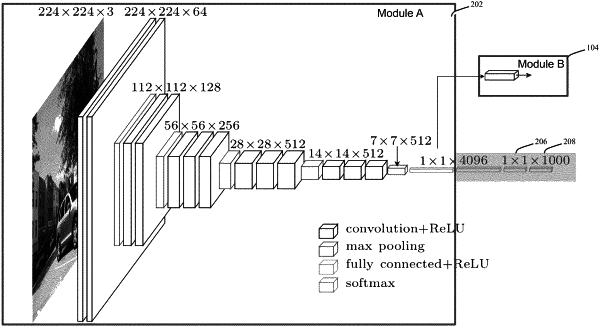| CPC G06N 3/084 (2013.01) [G06F 18/23211 (2023.01); G06F 18/40 (2023.01); G06N 3/0409 (2013.01); G06N 3/044 (2023.01); G06N 3/045 (2023.01); G06N 3/08 (2013.01); G06V 10/255 (2022.01); G06V 10/454 (2022.01); G06V 10/764 (2022.01); G06V 10/82 (2022.01); G06V 10/95 (2022.01); G06V 20/17 (2022.01); G06V 20/13 (2022.01)] | 12 Claims |

|
1. A method of implementing a Lifelong Learning Deep Neural Network (L-DNN) including a slow-learning subsystem and a fast-learning subsystem having previously determined weights in a real-time operating machine, the method comprising:
predicting, by the L-DNN, a first action for the real-time operating machine based on (i) an observation, by a sensor, of an environment of the real-time operating machine, (ii) weights of the fast-learning subsystem, and (iii) features extracted from the observation by the slow-learning subsystem;
determining, by the L-DNN, a mismatch between an expectation and a perception of the real-time operating machine based on the observation;
in response to the mismatch, triggering a fast learning mode by the L-DNN, the fast learning mode updating a weight vector of a corresponding category node of the fast-learning subsystem based on the observation or adding a category node with a weight vector based on the observation to the fast-learning subsystem without changing the previously determined weights of the slow-learning subsystem;
consolidating the weights of the fast-learning subsystem to restrict a memory footprint by the fast-learning subsystem and bound memory growth of the L-DNN to no faster than linear with a number of objects that the L-DNN is trained to recognize; and
applying the consolidated weights of the fast-learning subsystem to predict a second action for the real-time operating machine based on a subsequent observation, by the sensor, of the environment of the real-time operating machine.
|